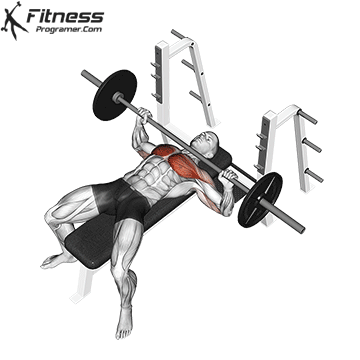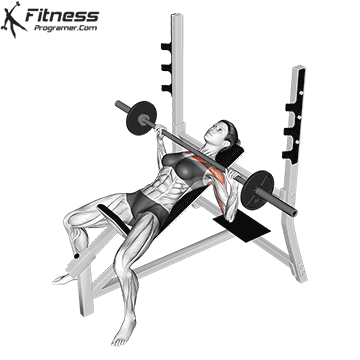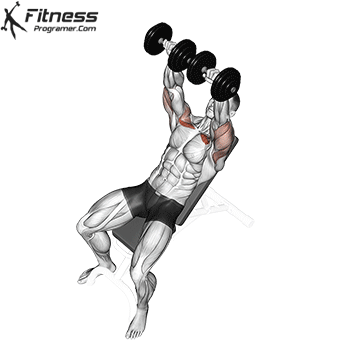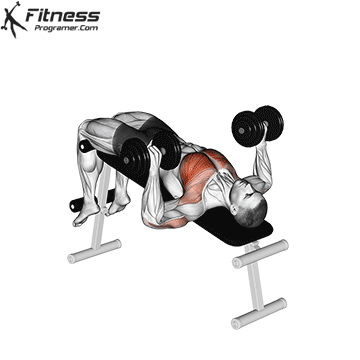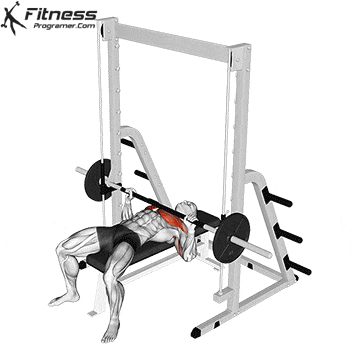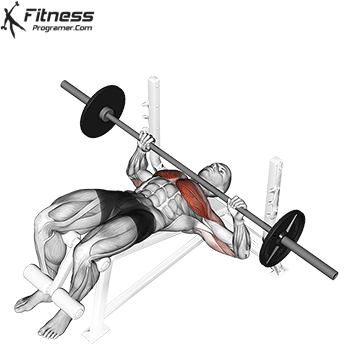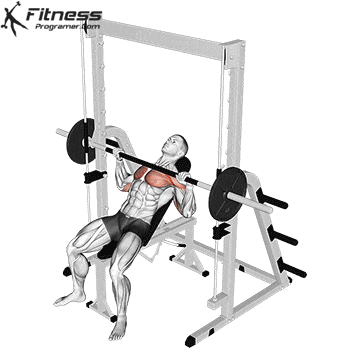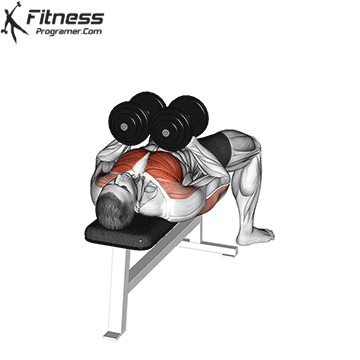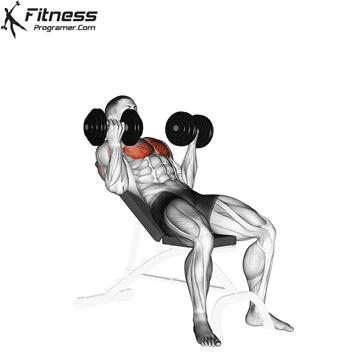Bench Press Overview
The bench press is a compound strength training exercise that primarily targets the chest muscles (pectoralis major and minor). It can be performed using various grips and angles to target different areas of the chest, with variations such as the incline, decline, or flat bench. This exercise is fundamental in bodybuilding, powerlifting, and general fitness training.
Overall, the bench press effectively targets multiple muscle groups in the upper body and is a valuable addition to any strength training routine.
How to do:
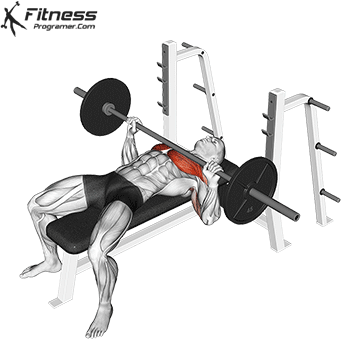
By following these tips and tricks for perfect form, you can maximize your gains while minimizing your risk of injury. Remember to always start with light weights and gradually increase the load as your strength and technique improve. Here are the steps to perform a bench press:
1. Set Up Properly:
- The first step in executing a proper bench press is to set up your equipment and body position. Make sure your bench is in a stable position, and your feet are firmly planted on the ground. Your back should be flat against the bench, and your shoulder blades should be retracted and squeezed together.
2. Grip the Bar Correctly:
- Your grip on the bar is an essential aspect of your bench press technique. You should grip the bar with your palms facing away from your body, and your thumbs wrapped around the bar. Your grip should be shoulder-width apart or slightly wider.
3. Engage Your Core:
- Before you start lifting, engage your core by taking a deep breath and bracing your abdominal muscles. This will help stabilize your spine and prevent any arching or bending during the lift.
4. Lower the Bar with Control:
- When lowering the bar, focus on controlling the weight and keeping your elbows tucked in at a 45-degree angle. This will help prevent shoulder injuries and improve your pressing power.
5. Press with Explosive Force:
- When pressing the bar back up, focus on pushing with explosive force and driving your feet into the ground. This will help activate your legs and provide a stable base of support.
6. Keep Your Shoulders Down:
- Throughout the lift, make sure to keep your shoulders down and away from your ears. This will help prevent any undue stress on your shoulders and keep the focus on your chest and triceps.
7. Use Proper Breathing Technique:
- Proper breathing technique is crucial when performing the bench press. Take a deep breath before lowering the bar and exhale forcefully as you press it back up.
8. Maintain Proper Elbow Position:
- Finally, make sure to maintain proper elbow position throughout the lift. Your elbows should be tucked in close to your body and not flared out to the sides. This will help prevent shoulder injuries and maximize your pressing power.
Benefits of bench press
The bench press is one of the most popular and effective compound exercises for building upper body strength, and it has numerous benefits that make it an essential component of any training routine. Here are some of the benefits of bench pressing:
1- Builds Chest Muscles:
Pectoralis major and pectoralis minor are muscle groups located in the rib cage. The bench press targets the chest muscles, primarily the pectoralis major and minor. The pressure applied by the pushing force enables the pectoral muscles to work most effectively. This exercise is one of the best ways to build size and strength in the chest muscles. (Learn How to Do a Chest Workout For Mass)
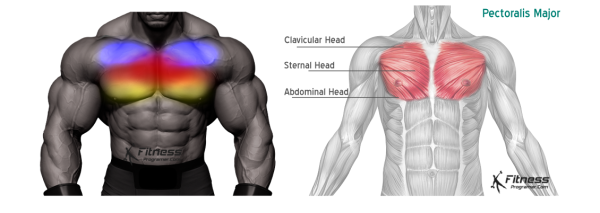
2- Increases Strength and Athletic Performance:
Many sports require upper body strength and power, such as football, basketball, and baseball. One of the main benefits of the bench press for athletes is that it can improve upper body strength and power. This can have a direct impact on sports that require upper body strength and power, such as football, basketball, and wrestling. By improving upper body strength and power, athletes may be able to perform better in various aspects of their sport, such as throwing, pushing, and grappling. (7 Exercises To Improve Your Performance)
Furthermore, the bench press can also improve muscular endurance, which is important for sports that require prolonged periods of activity. By improving muscular endurance, athletes may be able to perform better for longer periods of time and may be less prone to fatigue and injury.
3- Burns Calories:
Strength training exercises like the bench press can help you burn calories, increase your metabolic rate and lose weight. This is because building muscle mass requires energy, and the more muscle you have, the more calories your body burns at rest. This increased metabolic rate can lead to a reduction in body fat, which can help to enhance muscle definition by making muscles more visible.
4- Increases Bone Density:
Bone density refers to the amount of mineral content in bone tissue, and is a measure of bone strength and health. Low bone density is a risk factor for osteoporosis and other bone-related conditions, particularly in older adults. Bench press, as a strength training exercise, has been shown to increase bone density.
There are several mechanisms through which bench press and other strength training exercises can increase bone density. First, when we perform weight-bearing exercises like bench press, our bones experience mechanical stress, which stimulates bone remodeling and increases mineral content. Over time, this can lead to increased bone density and strength (2).
Secondly, strength training exercises like bench press also stimulate the production of bone-building cells called osteoblasts. These cells are responsible for laying down new bone tissue and increasing bone density.
In conclusion, strength training exercises like bench press can increase bone density through mechanical stress, stimulation of osteoblasts, and hormone production. By incorporating bench press and other strength training exercises into your training routine, you can help prevent osteoporosis and other bone-related conditions, particularly as you age.
Bench Press – Muscles Worked
The bench press is primarily a compound exercise that targets the pectoralis major, specifically the sternal head, as the main muscle group worked. However, it also engages several other muscle groups in the upper body as synergists and dynamic stabilizers.
- Primary Muscles:
- Pectoralis major (sternal and clavicular heads): Responsible for pushing movements and chest development.
- Synergists:
- Anterior deltoids: Assist the chest in lifting the bar.
- Triceps brachii: Extend the arms to complete the press.
- Dynamic Stabilizers:
- Biceps brachii: Stabilize the shoulder joint.
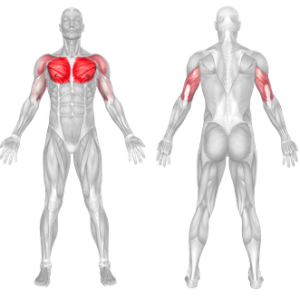
Bench Press Variations
The bench press is one of the most important exercises to increase strength and mass on the chest muscles, but increasing your strength or muscle mass determines how your form and technique will be applied in this movement.
There are different types of bench presses that also work different muscles according to your goals. For example, a narrower grip bench press also works the inner chest, forearms and triceps. Incline bench press, on the other hand, focuses more on the upper chest and front shoulder muscles. This preference should be chosen entirely based on your goals.
Each of the following bench press variations are exercises that work your chest muscles at different angles. Here are the most effective bench press variations.


